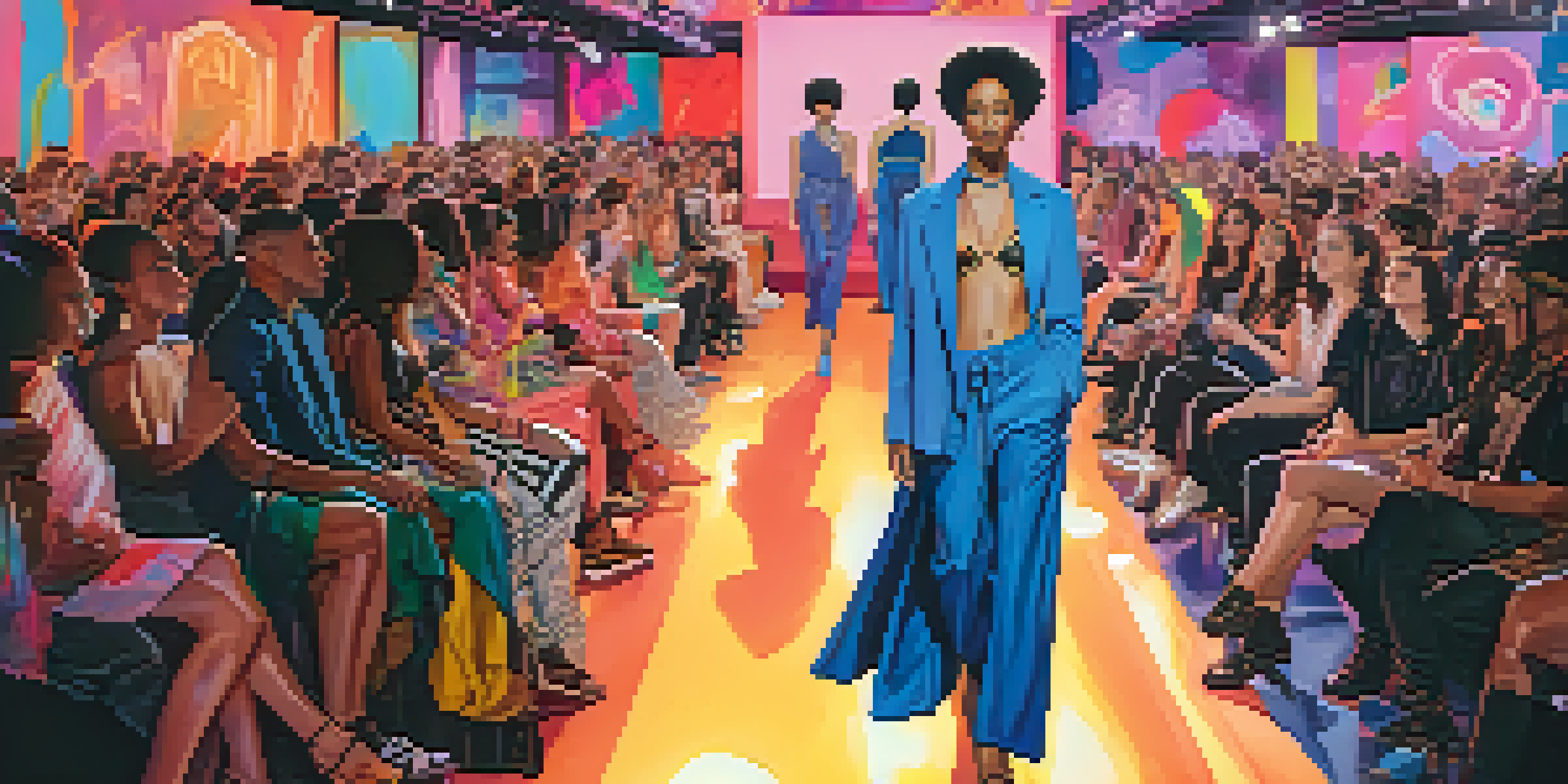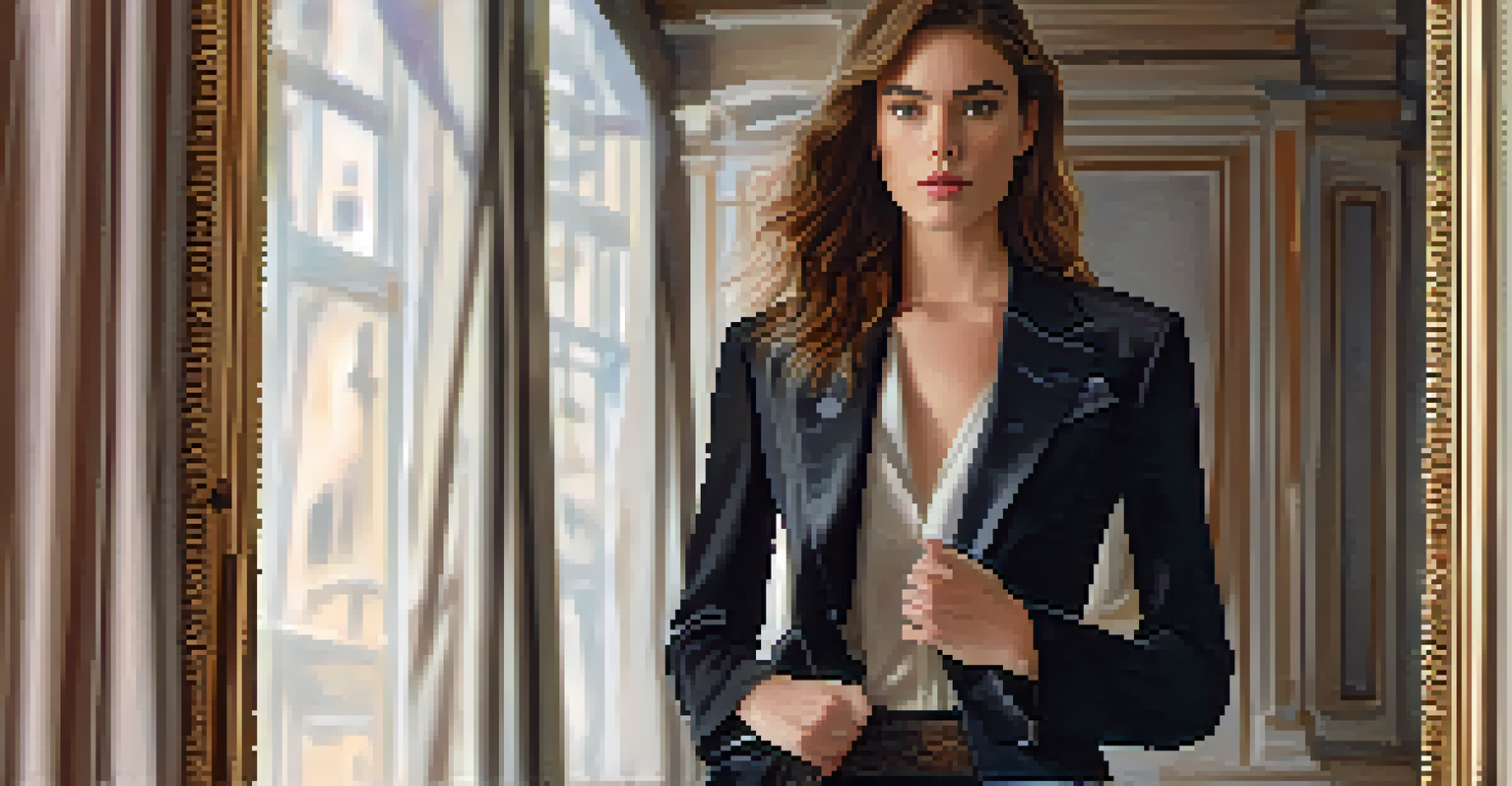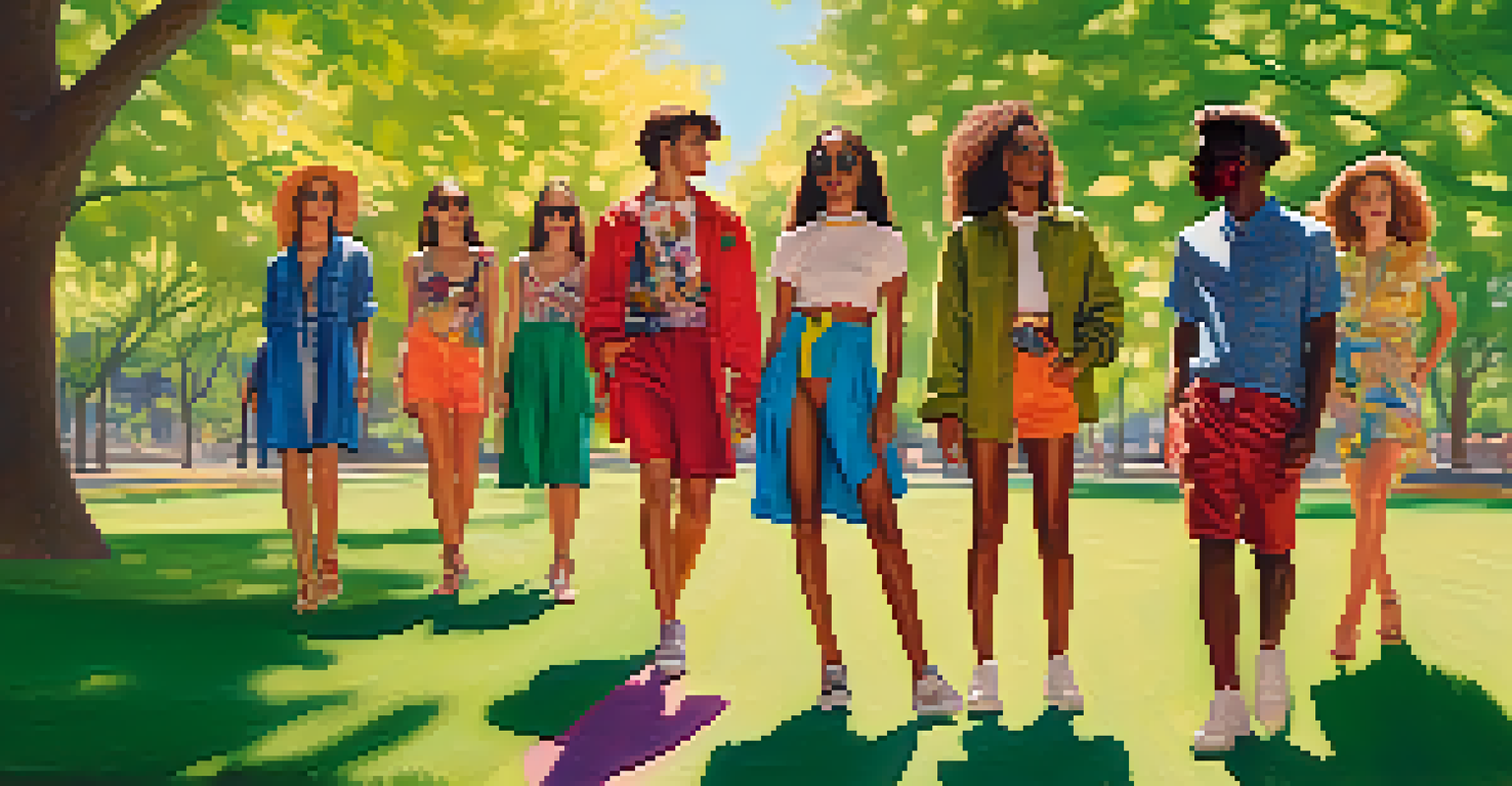The Impact of Runway Shows on Gender Norms in Fashion

Runway Shows: A Reflection of Society's Gender Norms
Runway shows have long been a mirror reflecting societal values, particularly regarding gender norms. The fashion industry often sets trends that both shape and challenge perceptions of masculinity and femininity. For instance, the prevalence of hyper-feminine looks in the past reinforced traditional gender roles, while recent shows have embraced a more fluid representation. This shift not only showcases diverse identities but also encourages conversations around what it means to be masculine or feminine in today's world.
Fashion is the armor to survive the reality of everyday life.
When observing runway shows from different eras, we can see how they adapt to cultural changes. In the 1980s, for example, power suits for women symbolized a push against conventional gender roles, while the androgynous styles of the 1990s broke further ground. Today's designers increasingly blur the lines, promoting unisex clothing that invites all genders to express themselves freely. This evolving narrative on the runway illustrates how fashion can be a powerful tool for societal change.
Ultimately, runway shows do more than just display clothes; they influence public perception and can help dismantle stereotypes. The visibility of diverse gender expressions on the runway fosters acceptance and understanding, inviting audiences to reconsider their own beliefs. As fashion continues to evolve, so too does its role in shaping and reshaping societal norms.
How Designers Challenge Traditional Gender Roles
Many contemporary designers are consciously working to challenge traditional gender roles through their collections. By creating designs that are not limited by gender, they are setting a new standard for the industry. For instance, designers like Harris Reed and Vivienne Westwood showcase pieces that are equally appealing to all genders, emphasizing that clothing should be about personal expression rather than rigid classifications. This approach not only empowers individuals but also invites a broader audience to engage with fashion.

Moreover, runway presentations have become platforms for political and social statements, further pushing the boundaries of gender norms. Designers often use their shows to promote inclusivity and diversity, showcasing models of various backgrounds, sizes, and gender identities. This visibility is crucial in an industry that has historically favored a narrow definition of beauty and gender. By embracing a wider range of representations, these designers contribute to a more equitable fashion landscape.
Fashion Reflects Gender Norms
Runway shows mirror societal values and influence perceptions of masculinity and femininity.
As these trends continue to gain traction, they inspire other designers to rethink their approach. The conversation around gender fluidity is becoming more mainstream, prompting even established brands to adapt their offerings. This shift indicates a growing recognition that fashion should reflect the complexities of gender identity, encouraging consumers to embrace their authentic selves.
The Role of Models in Shaping Gender Perceptions
Models play a critical role in shaping perceptions of gender through their representation on the runway. The choice of models can influence societal views on beauty and identity, making it essential for designers to consider who they feature in their shows. Increasingly, we see models who defy traditional gender norms, such as those who identify as non-binary or genderqueer. Their presence on the runway not only broadens the definition of beauty but also challenges audiences to rethink their preconceived notions of gender.
The beauty of fashion is that it can be a vehicle for change, a way for people to express their identities and challenge norms.
Additionally, the way models are styled can reinforce or subvert gender norms. When a male model walks the runway in traditionally feminine attire, it sends a powerful message about the fluidity of gender expression. This not only encourages acceptance but also inspires others to explore their own gender identities. As more designers embrace this idea, the impact on societal perceptions can be profound.
Ultimately, models serve as ambassadors of change, influencing how we view gender in the broader context of fashion. They have the power to challenge stereotypes and offer new perspectives, encouraging consumers to embrace diversity. As this movement continues, the fashion industry may become a more inclusive space that reflects the complexity of human identity.
The Influence of Celebrity Culture on Gender Norms
Celebrity culture has a significant impact on fashion, and consequently on gender norms. When celebrities embrace non-traditional styles, they can shift public perceptions and inspire fans to do the same. For example, when stars like Billy Porter or Harry Styles wear outfits that blend traditionally masculine and feminine elements, they challenge societal expectations. This visibility not only promotes individual expression but also encourages a cultural shift toward acceptance of diverse gender identities.
Moreover, red carpet events often showcase bold fashion choices that defy conventional gender norms. Celebrities have the platform to make statements through their attire, often using these moments to advocate for social change. By choosing to wear garments that challenge gender stereotypes, they can spark discussions and inspire their followers to embrace their own identities. This ripple effect highlights the powerful intersection of celebrity influence and fashion.
Designers Embrace Inclusivity
Contemporary designers challenge traditional gender roles by creating gender-fluid collections that promote self-expression.
As fans look to celebrities for inspiration, the way these figures present themselves can significantly shape public attitudes toward gender. The adoption of gender-fluid fashion by influential figures serves to normalize these expressions, making them more approachable for everyday individuals. In this way, celebrity culture not only influences fashion trends but also plays a pivotal role in shaping our understanding of gender.
Social Media: A New Frontier for Gender Expression in Fashion
Social media has revolutionized the fashion landscape, particularly in how gender norms are expressed and challenged. Platforms like Instagram and TikTok allow individuals to share their personal styles and interpretations of fashion without the constraints of traditional media. This democratization of fashion empowers people of all genders to showcase their creativity and express their identities. As a result, we see a growing movement toward diverse representations of gender in the fashion community.
Influencers and everyday users alike use social media to promote gender-fluid fashion, creating communities that celebrate self-expression. By sharing outfits that blend elements from various genders, they encourage followers to experiment with their own style. This grassroots movement is often more relatable than high-fashion runway shows, making it accessible to a wider audience. The impact of these online communities can lead to a ripple effect, inspiring broader acceptance of diverse gender expressions.
Furthermore, social media serves as a platform for dialogue about gender issues in fashion. Users can engage in conversations, share resources, and support one another in their journeys of self-discovery. This sense of community fosters an environment where individuals feel comfortable exploring their identities, ultimately contributing to a more inclusive fashion landscape.
The Future of Gender Norms in Fashion
As we look to the future, it's clear that the intersection of fashion and gender norms will continue to evolve. With ongoing discussions about inclusivity and representation in the industry, there is great potential for lasting change. Designers, models, and consumers alike are increasingly advocating for a fashion landscape that embraces fluidity and diversity. This shift is not only beneficial for the industry but also for society as a whole, as it encourages acceptance and understanding.
Moreover, emerging designers are prioritizing gender inclusivity in their collections, reflecting a growing awareness of the importance of representation. This trend signals a departure from the rigid gender binary that has dominated fashion for decades. As more brands adopt this approach, we can expect to see a wider array of styles that cater to all genders, further breaking down barriers.
Social Media Empowers Expression
Platforms like Instagram and TikTok democratize fashion, allowing diverse gender expressions to flourish and inspire acceptance.
Ultimately, the future of gender norms in fashion holds promise for a more inclusive and diverse industry. By continuing to challenge traditional expectations and embrace a broader definition of gender, fashion can serve as a catalyst for social change. As runway shows and other platforms evolve, they will play a crucial role in shaping the narrative around gender and identity, paving the way for a more equitable future.
Conclusion: Fashion as a Catalyst for Change
In conclusion, runway shows and the broader fashion industry have a profound impact on gender norms. By challenging traditional representations and embracing diversity, fashion can foster acceptance and understanding. From designers pushing boundaries to models redefining beauty, each element contributes to an evolving narrative about gender identity. This ongoing conversation is essential for promoting inclusivity and empowering individuals to express themselves authentically.
As we continue to witness the evolution of gender norms in fashion, it is important to recognize the role that consumers play in this transformation. By supporting brands and designers that prioritize inclusivity, we can collectively influence the industry. Our choices as consumers can drive change, encouraging brands to reflect the diverse identities of their audience.

Ultimately, fashion is more than just clothing; it is a powerful means of self-expression and a reflection of our society. By celebrating diversity and challenging norms, the fashion industry can continue to evolve, paving the way for a more inclusive future. Together, we can ensure that fashion remains a catalyst for positive change in our world.